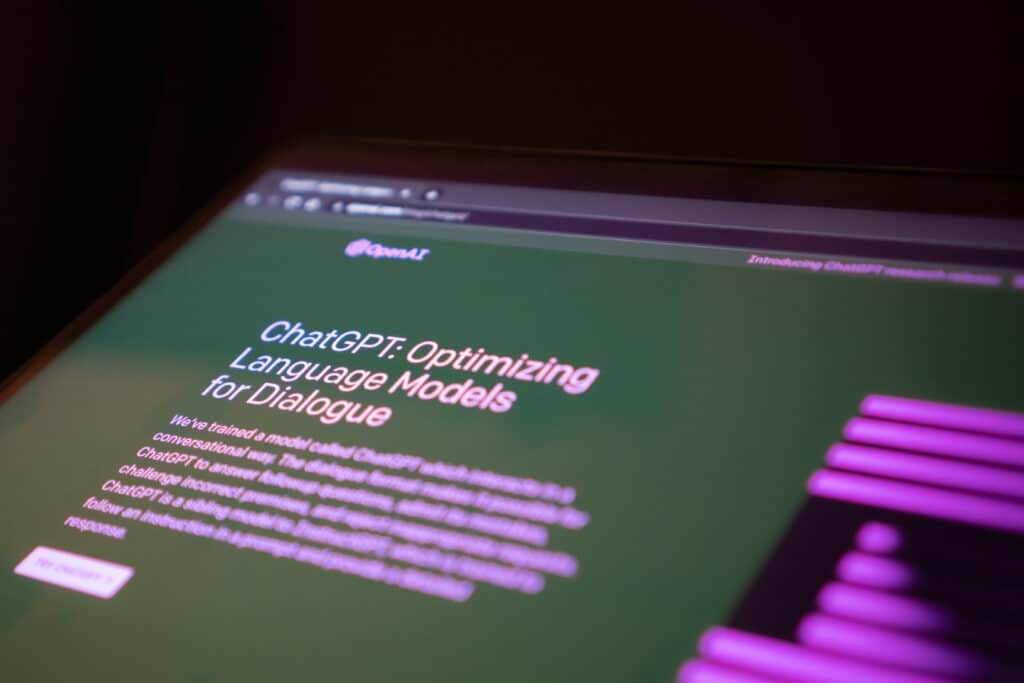ChatGPT entered the world and quickly became the fastest growing app ever with more than 100 million subscribers in just two months. OpenAI’s generative AI chatbot dazzled users with its impressive responses to queries and prompts.
At the same time, this technology’s abilities are setting off alarms for many educators, professionals and others who aren’t quite sure what the technology means for the future. What will happen to the term paper now that it’s so easy to cheat? What jobs are now at risk of automation with this next generation of AI?
Months after ChatGPT secured itself as a household name, the chatter continues as it becomes clear that most people weren’t ready for an AI with such an uncanny ability to mimic human responses. Although the hype around ChatGPT might overshadow some of its limitations, those who ignore the disruptive and life-changing abilities of today’s AI do so at their own risk.
Now, the question on everyone’s mind should be how to use AI to make the world better for humans.
We asked Raffi Margaliot, Verbit’s Chief Product & Technology Officer, to share his thoughts on generative AI, and its potential ability to make the world more accessible. Here are several ways he thinks this technology could be a force for good.
1. Improving Accessibility Tools for People with Disabilities
AI offers many solutions that support people with disabilities. Verbit’s voice recognition AI, for instance, is already helping to make captioning more cost-effective and readily available. Generative AI technologies, like ChatGPT, can also further this mission. Generative AI can create “new” content by digesting other content online and rephrasing or repackaging it. Margaliot said that these tools can make “alternative forms of content that are more accessible, such as audio descriptions for videos or captions for images.”
Some people are already finding that ChatGPT is beneficial for those with communication-related disabilities as it makes it easier for them to write emails. These individuals may take far longer to type or dictate. This time constraint can make them write shorter messages that may exclude niceties or courteous statements that help develop professional relationships. With ChatGPT, these individuals can generate content with those greetings and avoid potentially offending anyone for their short, to the point messages.
It’s likely that more accessibility uses for this generative AI will become available as people find new ways to implement the tool.

2. Automating Accessibility Testing
Testing websites for accessibility flaws can be complicated and costly. In fact, even the site for the Americans with Disabilities Act (ADA) fell short of current standards in a recent audit. With generative AI, it might be possible to “automate the testing of digital products and services for accessibility, by generating test cases and scenarios to verify if a product is compliant with accessibility standards,” said Margaliot.
By using generative AI in this way, accessibility audits could be faster and more complete. Identifying accessibility flaws before they impact users would break down barriers and boost access without the trial and error.
3. Enhancing Language Translation
Margaliot says that “generative AI technologies can help bridge language barriers by translating text and speech in real-time, making it easier for people who speak different languages to communicate with each other.”
People have already been using their phones to translate speech with apps like Google translate. Generative AI could make this process smoother and facilitate interactions that are more like natural conversations.
The ability to effectively communicate with people who speak another language could open doors for people professionally and personally. The implications for international business and travel are plentiful and exciting.

4. Improving Access to Information
According to Margaliot, the technology will also lead to better information access. With the assistance of generative AI, people can create “summaries and explanations of complex topics, making it easier for people to understand and engage with complex subjects.” Not everyone who has a wealth of knowledge about a subject is good at translating that information into plain language.
Generative AI could take those concepts and convert them into digestible text that helps people learn new subjects. Additionally, people might be able to try converting the text into various formats to find the one that fits their learning style best. This use case could prove extremely beneficial for students. For instance, consider a student who is taking a course with a professor who’s teaching style isn’t a good match for their learning style. That student could take a transcript of the professor’s lecture, and convert it into text that’s simple, clear or understandable. The same would hold true for professionals or anyone trying to learn a new and complex subject.
Considering the Responsible Use of Technology
Generative AI could lead to many positive developments for people with disabilities. However, Margaliot was quick to add a word of caution.
“While these technologies have the potential to make the world more accessible, they must be developed and used responsibly, with a focus on fairness, transparency and accountability, to ensure that they have a positive impact on society,” he said.
The next generation of AI can improve millions of lives. Unfortunately, it could also have negative impacts. There are simple ways to use these tools to commit scams, cheat on school assignments or spread misinformation. How generative AI will impact the world isn’t yet clear. Ultimately, it’s up to all of us to find ways to use technology to benefit humanity rather than cause harm.
At Verbit, we’re using AI to make the world more accessible. Contact us to learn more about how our captioning, transcription and audio description solutions, based on in-house AI technologies, can support inclusivity at workplaces, universities and beyond.




